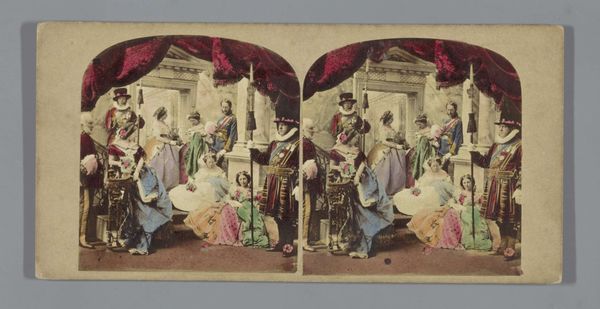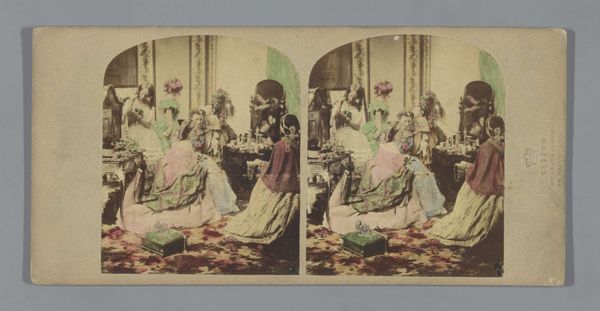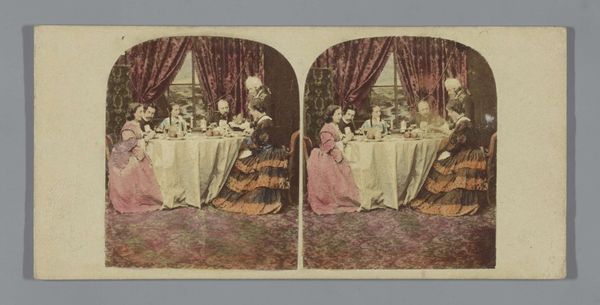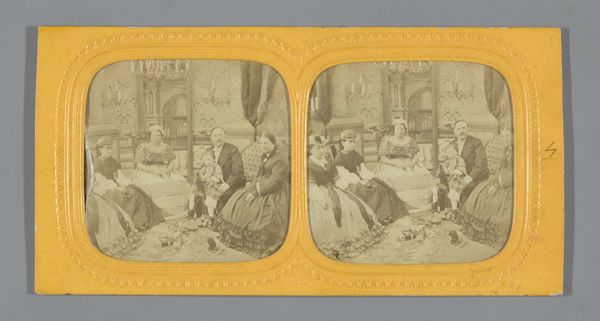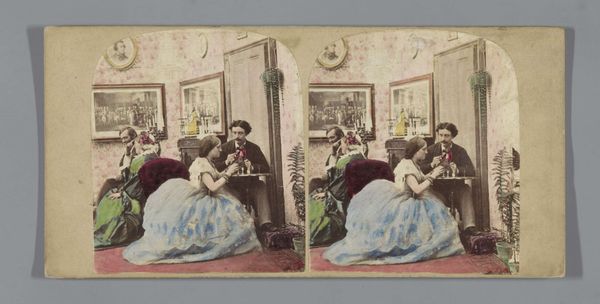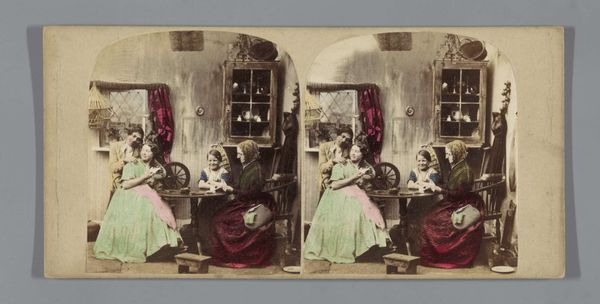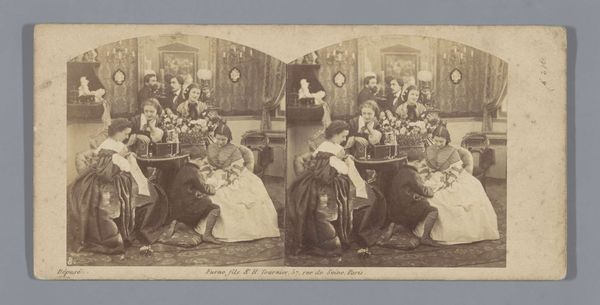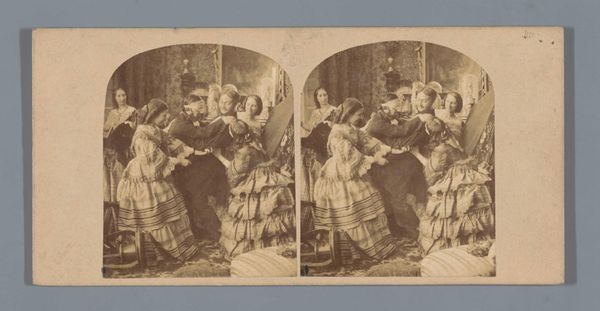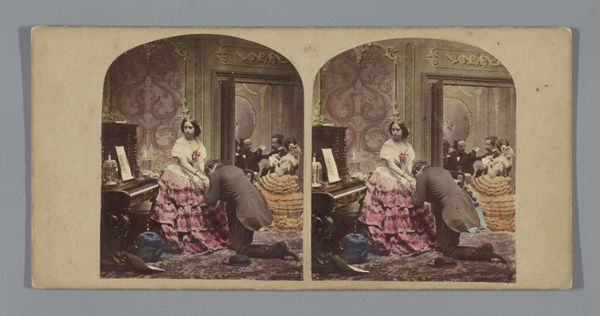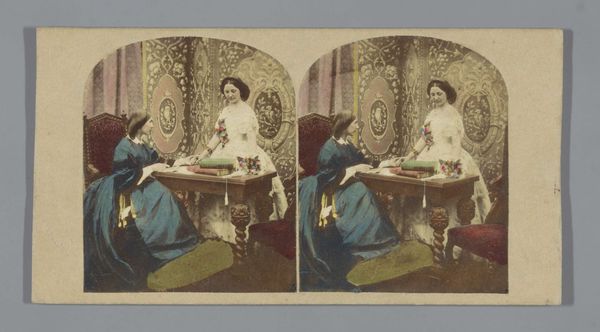
#
aged paper
#
toned paper
#
water colours
#
personal sketchbook
#
coloured pencil
#
underpainting
#
watercolour bleed
#
watercolour illustration
#
mixed media
#
watercolor
Dimensions: height 84 mm, width 174 mm
Copyright: Rijks Museum: Open Domain
Curator: This piece is an interesting find. It is called "Tafereel met een groep mensen rondom een liggende man," which translates to "Scene with a group of people around a reclining man." We believe it was made sometime between 1852 and 1863 using watercolor and colored pencil, perhaps from a personal sketchbook. Editor: The muted tones create a palpable atmosphere, doesn't it? Almost one of sorrow or grave concern. The way the figures cluster around this… sick man? … evokes such strong feelings of empathy. Curator: It certainly appears to be a scene of illness or perhaps even death. I think placing it in context, though, we can discuss how imagery functioned at the time, particularly the cultural and social conditions shaping ideas about sickness. Given its use of watercolour, likely this imagery served to portray ideas that intersect mortality, spirituality, and the social values around illness within domestic settings. Editor: Definitely. The window in the background and open curtains also introduce a layer of environmental discourse, as well. Consider their gaze directing outwards. This imagery could point to narratives relating their life event and personal conditions of a confined and domestic position within the public world at the time. Their clothes are such defining class signifiers. I feel it asks a deeper questioning to how we reflect gender roles through representation. Curator: I agree entirely that identity and social positionality is constructed. It raises important intersectional concerns and provides further research into cultural values and gender identity through clothing and positionality as visual codes in social contexts of the time. I'm wondering about accessibility for those suffering in real time? Are these works only for wealthy observers? Editor: Possibly so, yes. We must be aware of what narratives and historical evidence is preserved for cultural knowledge-building. Considering it now, this sketchbook piece gives us some insight into historical contexts of gender dynamics and social inequalities. Curator: A crucial point that reminds us of the responsibility art historians have in interpreting and conveying narratives with nuanced approaches that draw from philosophy, sociology, and beyond, and encourage conversation of critical societal issues that surround artwork context.
Comments
No comments
Be the first to comment and join the conversation on the ultimate creative platform.
